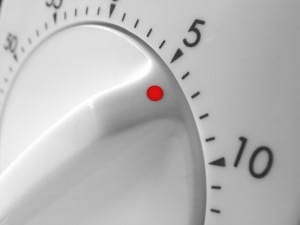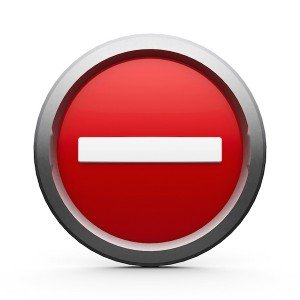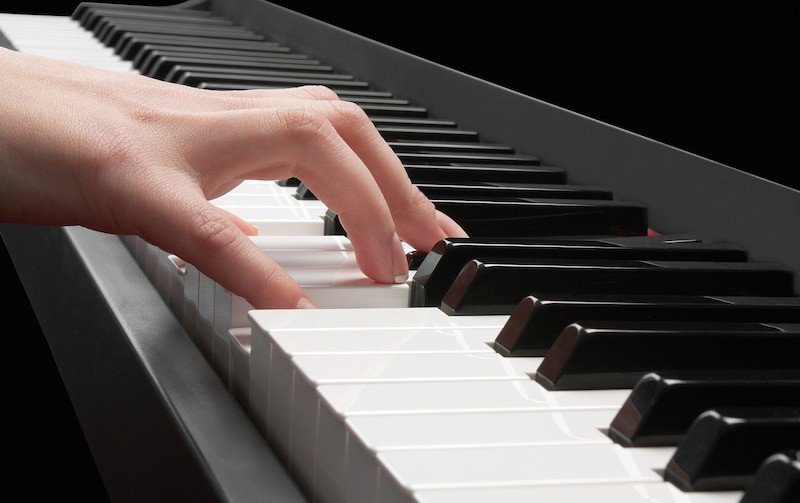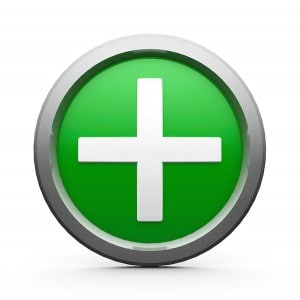Looking for some Korean practice? It’s a critical piece of learning the language, so it’s important to make your practice time fun and effective!
In this guide, we’re going to show you how and where to practice the Korean language.
We’ll also show you common mistakes and what to avoid when practicing Korean.
Read on to find out!
Think back to when you learned a language in high school. Many people can’t remember much of the languages they learned at school despite spending many hours studying them. And as a result, they believe that they are naturally bad at languages.
The good news is that, usually, that’s not true. Now you have a second chance with Korean. If you make use of better practice techniques, you will find that language learning can be surprisingly fun, simple, and effective. Just follow the practice advice we lay out here in this post, and you’ll have more reasons to love the language!
Contents
Korean Exercises
Having Korean exercises for practice is essential when you learn the language.
There are many Korean exercises you can use to practice depending on the skills you want to improve on.
You can look for exercises that can provide you with reading, writing, and speaking practices. You can have these exercises for practice.
For example, when you’re done with the basics of learning the Korean language, which includes learning Hangeul, you may want to have writing practices to improve your alphabet writing.
You may also want to have reading practices to improve your skills in reading Korean words and sentences in Hangeul.
Korean Reading Practice
Korean reading skills are one of the skills you’ll want to improve once you learn the Korean alphabet. You’d want to be able to read more words, phrases, and sentences. This will greatly help improve your vocabulary.
However, you may be wondering how you can have Korean reading practice. We’ll name here a few ways to have Korean reading practice.
One of the best ways to have Korean reading practice is to read children’s storybooks or short stories as they use simple words and sentence structure. If you want a story that’s more modern, you can have your Korean reading practice with webtoons. There are great webtoons in Naver and Daum that will be helpful for your Korean reading practice. Lastly, you can try out fun Korean tongue twisters.
Korean Reading Practice PDF
As you learn Korean, you’ll need to have materials such as PDFs to use for practicing your reading skills. In the process of practicing your reading skills, you’ll learn Korean words, which will boost your Korean vocabulary.
In this section, you’ll get a Korean reading practice PDF with short stories you can download, print, and use.
Here’s how you can use the Korean reading practice PDF:
- Read the passages aloud to help you practice your Korean pronunciation.
- Read the passages quietly to help you understand the passage.
- If there are Korean words that are new to you, you can search for their meanings using a Korean dictionary.
- Answer the questions that follow.
Below is a downloadable PDF you can use for your Korean reading practice.
Korean Reading Exercises
You can do many Korean reading exercises to improve your reading skills. However, one of the major prerequisites is learning Hangeul (the Korean alphabet).
Once you’re done with learning the Korean alphabet, here are a few reading exercises you can do:
- Read simple Korean words with one syllable. For example: 책 (chaek), 공 (gong), 소 (so), 코 (ko), and 밥 (bap). These one-syllable words have meanings, so this will also help you improve your vocabulary.
- Read Korean product labels. Since Korean culture is so popular around the world, Korean products and stores are accessible in many countries. You can make use of Korean products at local stores for your reading exercise.
- Read Korean books, webtoons, and news. This is another reading exercise you can do to improve your reading skills. You can use this exercise to improve both your reading skills and comprehension skills.
Korean Writing Practice
Another skill you would want to improve once you know how to read the Korean alphabet is your writing skills. You would want to know and be able to write Korean letters well.
Hangeul and other languages’ writing system that uses characters all have the proper way of writing the characters. If you want to write Hangeul well, you’ll need to learn the proper stroke for writing the letters.
However, don’t let this get in the way of your Korean writing practice. As long as you know how Korean letters look like, you can easily have your Korean writing practice by writing the letters in a box.
Korean Writing Practice PDF
For most Korean language learners, one of the goals is to be able to write Hangeul properly. You can improve your Korean writing using a Korean writing practice PDF that teaches you the correct strokes for writing Hangeul.
In this section, you’ll get a Korean writing practice PDF you can download, print, and use.
Just follow the examples in the PDF on how to properly write the alphabet.
Below is an example of where you can have your Korean writing practice.
Korean Writing Exercises
There are many Korean writing exercises you can do to improve your writing skills. One effective Korean writing exercise is to practice the alphabet on a grid paper. Just make sure that the grids are big enough for you to write the letters.
Here are some writing exercises you can try on grid paper.
- Write the individual Korean letters.
- Write consonant-vowel combination. This will let you write one Korean syllable. For example, 가 (ga), 나 (na), 다 (da).
- Write consonant-vowel-consonant combination. This will also let you write one Korean syllable but with three Korean letters. For example, 색 (saek), 물 (mul), 만 (man).
- Write two syllable words. For example: 가게 (gage), 우유 (uyu), 공기 (gongi), 택시 (taeksi), and 시간 (sigan)
Korean Speaking Practice
You now know how you can have Korean reading practice and Korean writing practice. This time let’s get to know ways you can have Korean speaking practice.
The first Korean speaking practice you can have is when you start reading words, phrases, and sentences aloud. That’s how you can hear yourself speaking in Korean!
However, of course, you won’t settle for that. To improve your speaking, you’ll need to learn more Korean grammar to help you structure your thoughts.
Below are examples of simple conversations you can have once you learn basic Korean grammar.
A: 수지 씨는 일본 사람입니까? (suji ssineun ilbon saramimnikka?)
Is Suzy Japanese?
B: 아니요. 한국 사람입니다. (aniyo. hanguk saramimnida.)
No, she’s Korean.
A: 조셉 씨는 선생님입니까? (josep ssineun seonsaengnimimnikka?)
Is Joseph a teacher?
B: 네. 선생님입니다. (ne. seonsaengnimimnida.)
Yes, he is.
A: 이름이 무엇입니까? (ireumi mueosimnikka?)
B: 저는 마이클입니다. (jeoneun maikeurimnida.)
Korean Speaking Practice PDF
Korean speaking practice PDFs have examples of dialogues that are commonly used in conversations. You can use these speaking practice PDFs as you improve your speaking skills in the Korean language.
In this section, you’ll get a Korean speaking practice PDF you can download, print, and use.
Here’s how you can use the Korean speaking practice below:
- Read the dialogues aloud. You can do it with or without a partner.
- Familiarize the Korean words used in the conversation.
- Observe how the sentences are formed.
Below is a downloadable Korean speaking practice PDF you can use.
How to Practice Korean
In this section, we will share with you how to practice Korean, which will include what to look out for when practicing your Korean skills, such as the do’s and don’ts.
Korean Practice “Don’ts”
When learning the Korean language, there are a few practices that most learners do that hinder them from progressing. Avoid these things when studying Korean. They’re sure to slow you down!
1. Don’t use Romanized Korean
When studying Chinese or Japanese, students are often advised to avoid learning any characters at the start and focus on learning the basics through Romaji or pinyin. For those languages, the huge effort required to learn how to read characters makes this approach a good one.
But you’re learning Korean! Korean has an incredibly simple writing system that can be learned in less than 30 minutes. With this in mind, the time costs of learning Hangul (the Korean writing system) are minimal.
The advantages of learning Hangul are huge.
Secondly, it allows you to start noticing patterns as soon as you start to learn Korean. For example, you might start noticing that lots of vocabulary that have to do with “school” have the syllable 학 in them. Some examples of these words are 학원, 학교, and 수학. Or you might notice that the colors in Korean all end in 색 (saek). Noticing these things can help you learn new vocabulary easily.
Thirdly, it will allow you to learn Korean while you are just walking about on the street as you can read signs. This is a far more interesting way of learning words like 약국 or 안과 than using learning them off a vocabulary sheet.
Overall, learning the Korean alphabet helps you greatly in the process of learning the language. It helps you speak Korean words and phrases more accurately and helps you learn more vocabulary along the way. If you find yourself stuck in some letters, don’t let it demotivate you. Always remember that practice makes perfect.
2. Don’t only memorize Korean phrases
The first purchase for many people who learn Korean is a phrasebook. They might think this is the best way to learn Korean because you get some basic and common vocabulary, phrases, and sentences. However, it isn’t a good method.
This is because when you first start studying, all of the words in the phrase or sentences are unknown, so learning a phrase or a sentence is like trying to remember a fifteen-digit telephone number. It is too long, and you are likely to make a mistake when saying it.
Due to the hierarchical nature of the Korean language, the phrase that you are learning might be wrong anyway, as phrasebooks don’t explain when to say 안녕 and when to say 안녕하십니까, for example. Once you have enough knowledge to understand the phrases, then learning them will be much easier!
3. Don’t just read Korean without implementing it. Practice!
When you practice the Korean you learn, it allows you to test it in everyday situations. For example, try saying something that you have studied out loud to someone.
If you get a positive reaction from that person, then you will remember it better. Also, they will reply to you, which will help your listening skills.
If you get a negative reaction, then you know that your study materials didn’t explain the context properly. You may need to adjust the practice material that you are using. You may want to find another lesson book for additional reference or information.
For example, there are two words that mean etiquette, 예의 (yeui) and 예절 (yejeol). To find out the difference, you have to actually try to use the language and see if you are understood or corrected. It’s a great way to practice and learn the subtleties of Korean!
4. Don’t think more Korean material is better
With all of the available free content on the internet, people inundate themselves with too much vocabulary and grammar. It is better to know 100 words really well than to “kind of know’ 500 words.
To use words, they need to be able to jump out of your brain quickly. If you study too many words, then this can be a problem. It is better to focus on the structure of the language so that you can easily understand sentences despite the word order and nuances being different from English. Being able to guess words from context is a much more valuable skill than just knowing thousands of words.
In order to avoid this, stick with the one or a few right materials to help guide you in learning the Korean language. Choose one that best fits your learning needs. If you want to speak Korean, choose a material or an online course that can make you speak the language easily and give you an avenue for Korean practice.
5. Don’t rely on willpower – have a Korean study plan
If you have a plan for learning Korean, then you can learn much faster. Without one, you can easily get bogged down and lose motivation. Even with all the willpower in the world, you wouldn’t run a marathon without a training plan, would you? So why study a language without a plan?
Make a Korean language plan now so you can start learning Korean and find a way to have Korean practice.
With all of these practice “don’ts,” you may be wondering where the practice “do’s” are. Here we go!
Get “How to Practice Korean” Free PDF Guide
Korean Practice “Do’s”
Generally, in order to succeed in a lot of things, there are habits or practices you need to do. This is the same with learning the Korean language.
These are the things you should do if you want to have success in studying Korean. Most of these are related to your attitude and mindset in learning the Korean language.
1. Do study Korean consistently, even if it’s for 5 minutes a day
By making something a habit, it becomes much easier to do. It allows you to break down big tasks like learning 1000 words into small tasks like learning 20 words a day. It also prevents you from forgetting what you have already learned.

Make it fun and learn common and practical words first. To start things off, here is a great guide on animal vocabulary in Korean. Here is a post on months in Korean with a downloadable vocabulary practice worksheet. If you also want to learn how to express numbers in Korean, you can check our Korean numbers guide.
Another simple yet entertaining way to learn Korean is by listening to songs. You can choose your favorite Korean song and listen to it while following the lyrics. You won’t even realize that you have also been learning how to read Korean this way!
2. Do have a Korean language target or goal
And focus on that target! Learning a language is no small task. Native-level fluency is so far off for beginners that without a target or goal, you can easily lose motivation.
Where do you want to be in 1/3/6/12 months from now in terms of Korean language skills? How much time are you willing to put in order to achieve your target skillset?
Choose a realistic target and then focus on it. Start small. Once you achieve your small goals, this success will bring you the confidence to aim higher.
3. Do balance your Korean studies
The combo of reading, writing, speaking, and listening all complement each other. It is natural to be better at one of these than the others, but you shouldn’t let your strengths and weaknesses affect your study. Keep working on each part of the language a little bit each day, and you will see your weaker skills improve.

4. Do learn the Korean language fundamentals
The fundamentals will be your building blocks for learning any language. A strong foundation is key!
The biggest differences between Korean and English are sentence structures and grammar. Practice is needed in order to understand sentences, so you should focus on this in order to improve your understanding. This will allow you to participate in a conversation and to guess the meaning of unknown words in sentences.
It is tempting to just study more words, but that can only get you so far. If you can’t make a sentence quickly enough, you can’t join in a conversation, no matter how many words you know. That’s no fun!
5. Do focus on a reliable way to learn Korean, and follow it
Jumping around from program to program and using multiple resources can actually make learning more difficult. Programs are designed so that each chapter reinforces the previous one, allowing students to naturally build on and retain what they have learned.
If you study Korean by using multiple programs, then you will likely cover the same material multiple times in an inefficient way or end up forgetting what you have learned.
Using a single program can also help you by giving you concrete goals to aim for, such as passing level one of the program. Make a plan that you can stick to, and you will find studying Korean to be both easy and fun!
If you’re looking for a step-by-step, structured online Korean course, you may want to check out the 90 Day Korean Inner Circle.
Now that you have the dos and don’ts when learning Korean, the next thing you might have in mind is where and how you can practice your Korean skills. These are valid questions! You’ll have them answered in the next section.
Where to Practice Korean
When learning a new language, practicing conversations with native speakers is a fun and exciting challenge that lets you reap the rewards of the language-learning process. Sure, learning new phrases is fun at home, but it’s way more fun to use those phrases when conversing with a native speaker who can understand what you’re saying!
As you continue on your journey to speak and practice Korean, you may not be lucky enough to visit Seoul right off the bat and dive completely into Korean culture. However, there may be a Korean community in a city near you that makes practicing Korean possible in your own backyard!
Get “Where to Practice Korean” Free PDF Guide
Below is our list of the top cities to practice Korean in and why we think you should visit these cities as soon as possible.
1. Beijing, China
Unsurprisingly, Beijing, China has a very large Korean population due to its proximity to South Korea. As many as 200,000 Koreans live in Beijing at any given time.
As such, if you’re visiting Asia (or living in China on a more permanent basis) but can’t make your way over to Korea to practice Korean, Beijing is a great place to visit.
Beijing boasts two separate Koreatowns or areas where Korean expats live in enclaves, so there are plenty of opportunities to converse with native Korean speakers and experience Korean culture.
2. Los Angeles, California
Short of taking the plunge and flying to Korea, spending time in Los Angeles is the next best thing. LA boasts the reputation of having the most Korean residents barring Korea itself.
LA’s Koreatown is massive, sprawling over several neighborhoods, and it has a rich and vibrant history that has made it the place it is today. Undergoing massive development immediately following the 1992 riots, LA’s Koreatown is now packed with restaurants, movie theaters, and other Korean businesses that give visitors the opportunity to have a truly authentic Korean experience.
As somebody practicing Korean living in LA’s Koreatown, you can increase your exposure to Korean food and culture, and you can increase your chances of widening your network of Korean friends.
Who knows – maybe you’ll even score a date hanging out on Wilshire Boulevard!
3. New York City, New York
If you’ve had the opportunity to spend time in New York, chances are you’ve spent time in Koreatown without even realizing it.
New York Penn Station, one of the most common ways to get into the city, is located right on the cusp of Koreatown. New York’s Koreatown is a destination for speakers of Korean as well as tourists (and locals) who don’t know much about the language or culture – the Korean restaurants and shops centered around midtown Manhattan are undeniably fun for anyone and inclusive of everyone.
Korean shops, nightclubs, restaurants, and offices are stacked high within a radius of only a couple of city blocks, reminiscent of the dense and bustling setup of Seoul. Stop by Miss Korea BBQ for Korean BBQ and try the delicious soju watermelon cocktail.
It’s enough for several people, so be sure to bring some of the friends you’re bound to make during your visit!
4. Tokyo and Osaka, Japan
Japan has several sizeable cities that have prominent Korean populations, two of them being Osaka and Tokyo.
Osaka and Tokyo have a combined total of 170,000 Korean residents between them. Seek out the Koreatowns in either city for a chance to have an authentic Korean experience outside of Korea!
5. Atlanta, Georgia
The Korean population in Atlanta has grown considerably in the last ten years, and there’s no sign of that growth slowing or stopping.
Currently, there are 50,000 Korean residents living in the Atlanta area. Though this number is considerably smaller than some of the other cities on this list, Atlanta should not be overlooked – if it continues growing at the rate it has been, ten years from now, there will be 100,000 Korean residents!
If you live near Atlanta, spend some time in Koreatown off of highway I-85 and order a traditional dish at Takorea or So Dong Kong Tofu House for a chance to practice Korean with native speakers!
6. Sydney, Australia
Considering its proximity to Asia, it should be no surprise that Sydney hosts a population of 150,000 Korean residents.
Sydney is unique in that while there is a central Koreatown within the city’s limits, there is also a considerable number of Koreans who live and work in the suburbs immediately surrounding the city.
If you live in Australia and want to increase your opportunities to practice Korean but don’t necessarily want to commit to city life, living in one of the suburbs around Sydney may be a good compromise for you.
You’ll still increase your chances of interacting with native Korean speakers on a day-to-day basis who can help enrich your language practice, but you don’t have to deal with the hustle and bustle that comes with urban living.
Wrap Up
Learning Korean online will get you far – especially in an age where it’s possible to easily converse with people on the other side of the globe through Skype and web forums. Nowadays, anybody can practice Korean from the comfort of their living room.
However, as you get more deeply immersed in your journey to learn to speak Korean, you may feel the inclination to visit (or move to) one of the cities on this list to increase both your exposure to elements of Korean culture and your chances of socializing with native speakers who can help you on your way to fluency.
Experiencing the aspects of Korean culture that are only available when you’re visiting or living in an area densely populated with native Koreans is part of the thrill of learning the language. If you’re in the country, there are movies in Korean played in movie theaters, stores within which the clerk will address you in Korean, and restaurants in which you can order in Korean, which makes practicing Korean possible anywhere.
These give great opportunities to practice reading Hangul, the Korean alphabet. If you can’t read Hangul yet, you should definitely study it before visiting Koreatown; it only takes about 90 minutes. Plan a trip and have fun with it!
If you wish to learn Korean with a friend or loved one, you may consider giving them and yourself a Korean language gift card. You can know more about the language gift card here.
Have you visited Koreatowns located in any of the cities on this list? What about a city not on this list? Let us know in the comments below!
Photo Credit: Bigstock.com




















안녕하세요 90하루,
There are about 10k Koreans around New Malden, England. Enough to warrant an H Mart. So, for people around London, they should be able to find someone to practice with there.
Cheers
글렌
Thanks for your information, 글렌! ^^
Can I have a PDF version of this?
Hi, Devishi! Currently, PDF files are not available for most articles on our blog. ^^